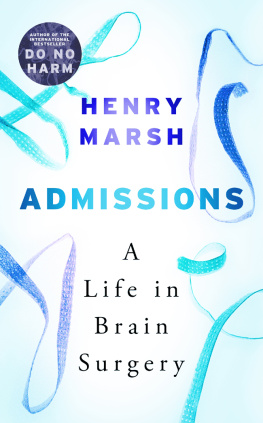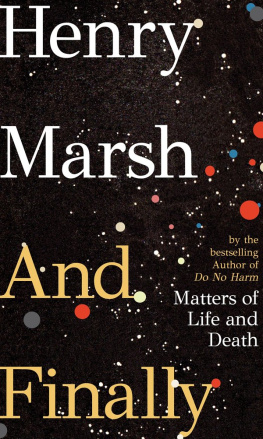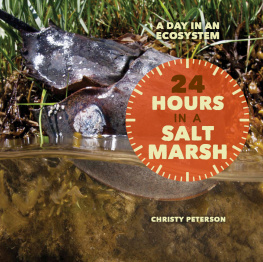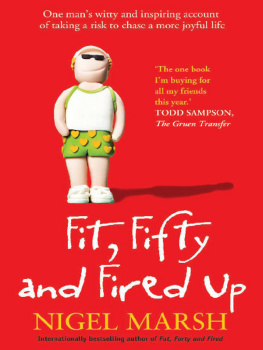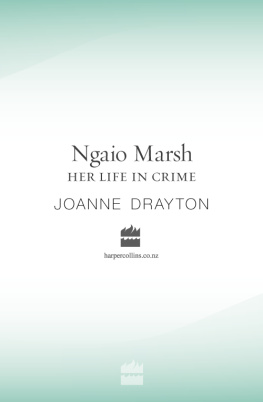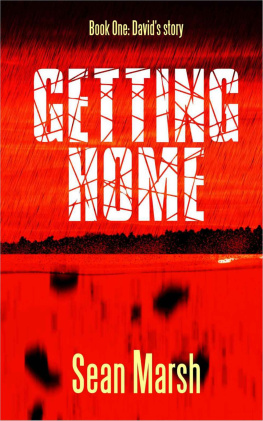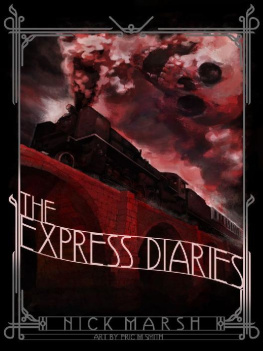Do No Harm
ADMISSIONS
A Life in Brain Surgery
Henry Marsh

To William, Sarah, Katharine and Iris
Neither the sun nor death can be looked at steadily
La Rochefoucauld
We should always, as near as we can, be booted and spurred, and ready to go
Michel de Montaigne
Medicine is a science of uncertainty, and an art of probability
Sir William Osler
CONTENTS
I like to joke that my most precious possession, which I prize above all my tools and books, and the pictures and antiques that I inherited from my family, is my suicide kit, which I keep hidden at home. It consists of a few drugs that I have managed to acquire over the years. But I dont know whether the drugs would still work they came with neither a Use By nor a Best Before date. It would be embarrassing to wake up in Intensive Care after a failed suicide attempt, or to find myself having my stomach pumped out in Accident and Emergency. Attempted suicides are often viewed by hospital staff with scorn and condescension as failures in both living and dying, and as the agents of their own misfortune.
There was a young woman, when I was a junior doctor and before I started training to be a brain surgeon, who was saved from a barbiturate overdose. She had been determined to die in the wake of an unhappy love affair, but had been found unconscious by a friend and taken to hospital, where she was admitted to the ITU the Intensive Therapy Unit and ventilated for twenty-four hours. She was then transferred to the ward where I was a houseman the most junior grade of hospital doctor when she started to wakeup. I watched her regain consciousness, coming back to life, surprised and puzzled at first still to be alive, and then not quite sure whether she wanted to return to the land of the living or not. I remember sitting on the edge of her bed and talking with her. She was very thin, and was obviously anorexic. She had short, dark-red hair, which was matted and dishevelled after a day in a coma on a ventilator. She sat with her chin resting on the hospital blanket over her drawn-up knees. She was quite calm; perhaps this was still the effect of the overdose, or perhaps it was because she felt that here, in hospital, she was in limbo, between heaven and hell that she had been given a brief reprieve from her unhappiness. We became friends of a kind for the two days that she was on the ward and before she was transferred to the care of the psychiatrists. It turned out that we had acquaintances in common from Oxford in the past, but I do not know what happened to her.
I have to admit that Im not at all sure that I would ever dare to use the drugs in my suicide kit when and it may well happen quite soon I am faced with the early signs of dementia, or if I develop some incurable illness such as one of the malignant brain tumours with which I am so familiar from my work as a brain surgeon. When you are feeling fit and well, it is relatively easy to entertain the fantasy of dying with dignity by taking your own life, as death is still remote. If I dont die suddenly, from a stroke or a heart attack, or from being knocked off my bicycle, I cannot predict what I will feel when I know that my life is coming to an end an end which might well be distressing and degrading. As a doctor, I cannot have any illusions. But it wouldnt entirely surprise me if I started to cling desperately to what little life I had left. Apparently, in countries where so-called doctor-assisted suicide is legal many people, if they have a terminalillness, having initially expressed an interest in being able to die quickly, do not take up the option as the end approaches. Perhaps all that they wanted was the reassurance that if the end was to become particularly unpleasant, it could be brought to a quick conclusion and, in the event, their final days passed peacefully. But perhaps it was because, as death approached, they started to hope that they might yet still have a future. We develop what psychologists call cognitive dissonance, where we entertain entirely contradictory thoughts. Part of us knows, and accepts, that we are dying but another part of us feels and thinks that we still have a future. It is as though our brains are hardwired for hope, or at least that part of them is.
As death approaches, our sense of self can start to disintegrate. Some psychologists and philosophers maintain that this sense of self, of being coherent individuals free to make choices, is little more than a title page to the great musical score of our subconscious, a score with many obscure, often dissonant voices. Much of what we think of as real is a form of illusion, a consoling fairy story created by our brains to make sense of the myriad stimuli from inside and outside us, and of the unconscious mechanics and impulses of our brains.
Some even claim that consciousness itself is an illusion that it is not real, that it is a trick played on us by our brains but I do not understand what they mean by this. A good doctor will speak to both the dissonant selves of a dying patient the part that knows that it is dying, and the part that hopes that it will yet live. A good doctor will neither lie nor deprive the patient of hope, even if the hope is only of life for a few more days. But it is not easy, and it takes time, with many long silences. Busy hospital wards where most of us are still doomed to die are not good places in which to have such conversations. As we lie dying, many of us willkeep a little fragment of hope alive in a corner of our minds, and only near the very end do we finally turn our face to the wall and give up the ghost.
The cottage stands on its own by the canal, derelict and empty, the window frames rotten and hanging off their hinges and the garden a wilderness. The weeds were as high as my chest and hid, I was to discover, fifty years of accumulated rubbish. It faces the canal and the lock, and behind it is a lake, and beyond that a railway line. The property company that owned it must have paid somebody to clear out the inside of the cottage, and whoever had done the work had simply thrown everything over the old fence between the garden and the lake, so the lake side was littered with rubbish a mattress, a disembowelled vacuum cleaner, a cooker, legless chairs and rusty tins and broken bottles. Beyond the junk, however, lay the lake, lined by reeds, with two white swans in the distance.
I first saw the cottage on a Saturday morning. A friend had told me about it. She had seen that it was for sale and knew that I was looking for a place where I could establish a woodworking workshop in Oxford to help me cope with retirement. I parked my car beside the bypass and walked along the flyover, deafening cars and trucks rushing past me, to find a small opening in the hedge, almost invisible, at theside of the road. There was a long line of steps covered in leaves and beechmast, under a dark archway formed by the low, bending branches of beech trees, leading down to the canal. It was as though I was suddenly dropping out of the present and returning to the past. The roar of the traffic became abruptly muted as I descended to the quiet and still canal. The cottage was a few hundred yards away along the towpath, over an old, brick-built humpback canal bridge.
There were several plum trees in the garden, one of them growing up through an obsolete and rusty old machine with reciprocating blades like a hedge-trimmer, for cutting heavy undergrowth. It had two big wheels with

